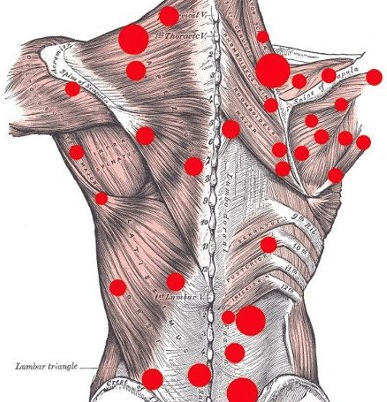Philosophy: it’s never too late to feel better.
"Thorns, although embedded for a long time, still can be pulled out. Stains, although filthy for a long time, still can be washed away. Knots, although tied for a long time, still can be untied. Obstructions, although blocked for a long time can be opened up...The skillful acupuncturist can take hold of the dis^ease in the same way [s]he pulls out thorns, washes out stains, unties knots, or breaches obstruction."
- Ling Shu, or The Spiritual Pivot, written 204 B.C.
feel heard
Acupuncturist Tabitha Silver believes the most important skill a practitioner can have is listening deeply to her clients so she can get them on their way to feeling better, for good.
About Acupuncture Physical Medicine:
Tabitha practices a powerful touch-based form of diagnosis & treatment called Acupuncture Physical Medicine, which utilizes a combination of classical acupuncture theory, modern empirical diagnostics & physical medicine, hands-on bodywork, and lifestyle coaching.
Acupuncture Physical Medicine (APM) is a modern approach to acupuncture that combines classics-based French-meridian acupuncture with Western physical medicine techniques, most notably trigger point dry needling.
APM assessment of a patient focuses on palpation of the body for myofascial constrictions, which are referred to as holding patterns. By studying Chinese and Japanese tight tender points, and undertaking a detailed study of myofascial trigger points, practitioners learn how to navigate the body to release areas of obstruction. In this way APM assessment and treatment takes as its basis a patient's actual, physical, lived experience of illness or distress.
Acupuncture Physical Medicine is especially well suited to treating the complex and chronic disorders that plague modern medicine; from chronic pain, chronic fatigue, multiple allergies, and stress disorders, to the symptomatic relief of internal medical complaints in the various organ systems of the body, including neurological, cardio-respiratory, gastro-intestinal, genitourinary, and gynecological complaints. APM has also proven an effective complement to the psychological treatment of post trauma disorders.
Developed over the past twenty-five years by Dr. Mark Seem, Ph.D., Acupuncture Physical Medicine draws from classical acupuncture in which a focus on meridians is central. In classical acupuncture, a practitioner looks for signs of over-activity or under-activity, and obstructions in meridian circulation, and then corrects the imbalances and blockages. At the same time, APM draws from Western physical medicine and osteopathy, most notably as taught by the late Janet Travell, M.D, doctor to President John F Kennedy. In developing her trigger point teachings Dr. Travell was herself inspired by nineteenth century osteopathic and physical medicine practices of body palpation, which sought out the myofascial constrictions at the root of a patient's pain and dysfunction.

